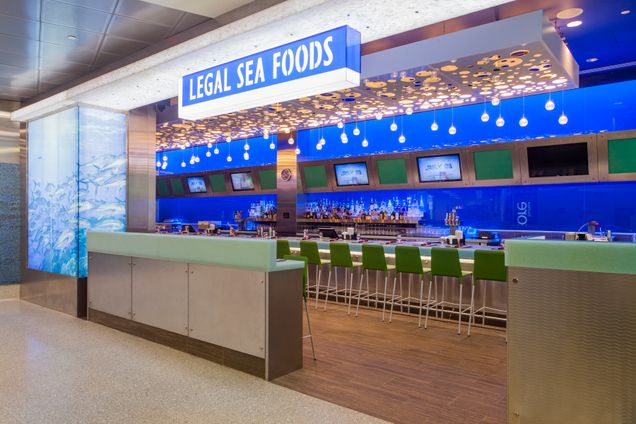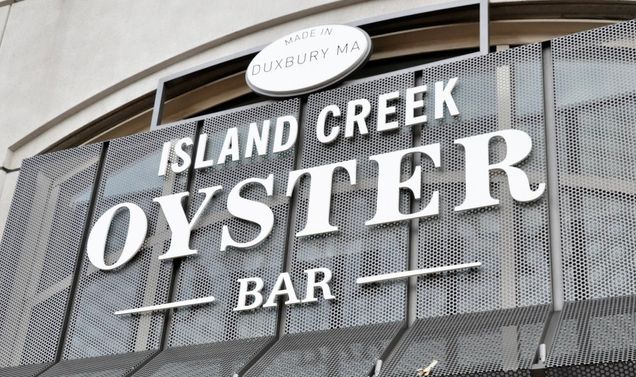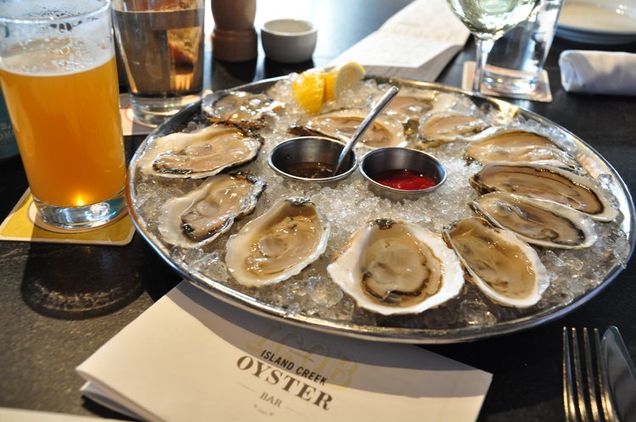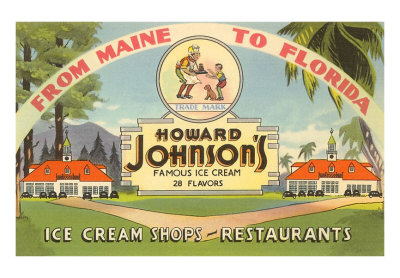When is a Group a Chain, and a Chain a Brand?
By Christopher Muller
When is a Group a Chain, and a Chain a Brand?
The subtle change in Boston’s “independent” restaurant market.
Over the past four decades, in a slow but inexorable manner, a growing corporate imperative has replaced the independent restaurant in most markets. In greater Boston, possibly more than in many similar sized cities, a reputation for having more independent than chain restaurants is something bordering on civic pride. This perception is especially interesting to observe since the city has seen an explosive growth in new restaurant offerings over the past fifteen years. This growth of new restaurants in turn has both helped, and been helped by, the rejuvenation of many of Boston’s historic neighborhoods from Fort Point to Fenway, from Somerville to Southie.
What makes this belief in the power of the independent so unique is that it really is masked by the rise of the portfolio power of the “Restaurant Group” (or sometimes “Collection” or “Family”) of mostly individual restaurant concepts all managed by a single corporate entity. A company which creates an assortment of single restaurants into a portfolio is usually called a “multi-concept operator,” which is appropriate here. Using the most accepted definition, any company operating three or more restaurant units from a common headquarters in this manner is deemed a chain,[1] but apparently not in Boston.
While artisanal and craft enterprises continue to be the hot new thing for many savvy young consumers, there is still the subtle but important growth of corporate multi-unit or multi-concept brands on every street corner. What makes this of particular interest today is that because of social media and the almost instantaneous fame (or infamy) it can bring, creating a distinct brand identity is more important than ever. Even the start-up, craft, fair trade coffee and bakery shop is looking to define itself as a unique offer in the branded world.
In this new, almost paradoxical environment, the owner’s reputation for being authentic and unique is only one part of the value equation; competence and quality of execution are now expected, even from the smallest of offerings. The market and the restaurateur are both keenly aware that brands live or die on the most fickle of attributes. How the customer perceives that new reputation, in reality the enterprise’s brand identity, needs to become the daily focus of the operation as it builds consumer knowledge and loyalty.
Logically all chain restaurants have to begin as a single unit. Though eventually, the business model of multi-unit/multi-concept corporate restaurants is as different from that of the single independent restaurant as the daily activities of a 1000-room Hilton Hotel are from a six-room Bed & Breakfast inn. In this new world the traditional reputation of an owner or chef is only one part of the value equation. Instead of the owner’s name above the single front door signaling integrity and quality, the branded business name often becomes the focus of consumer knowledge and loyalty. For more than 30 years, a new wave of celebrity chefs have capitalized on this trend by branding their names as early as possible in their careers.
Defining a Chain
Two interesting local restaurateurs who are tied to the independent vs. chain debate are very Boston based, one historic and one quite modern. The first person credited with coining the phrase “chain of restaurants” was Howard Johnson, the eponymous founder of the mid-20th century Howard Johnson’s restaurant empire, originally from Quincy, MA. As his brand name grew through franchising to more than 1000 restaurants, he told his operators that all of the units from Maine to Florida[2] were linked together like a chain, the reputation of all became affected by the weakest link not holding up system-wide standards.
Seventy years later, the other person is Roger Berkowitz, the CEO of the family controlled and Boston-based restaurant company, Legal Sea Foods. In his desire to not have Legal Sea Foods ever associated with the phrase “chain restaurant” in 2014 his New York based advertising firm, DeVito/Verdi, created an entire advertising campaign based on the tag line, “Where chain is a four-letter word.” Mr. Berkowitz himself appeared in a number of television and print ads with this as a theme, including one commercial where he was strapped to a lie-detector machine. In an August 6, 2014 article in the New York Times, “Call It What You Like, but Not a Chain” the point was well made.
“While Legal Sea Foods has a number of locations, we’re not a chain,” says Mr. Berkowitz, seated at a restaurant table, in one of the new spots. “Each of our restaurants is unique, not cookie-cutter, so you can call me stupid, an egomaniac, or even an” — the word is bleeped and his mouth pixelized in a scene. “Just don’t call me a chain.” [3]
While Legal Sea Foods, currently with 26 restaurants in Massachusetts and another ten in other states, is not as large as The 99 Restaurant & Pubs, with 63 in Massachusetts and more than 40 others, or even Bertucci’s with 37 restaurants in Massachusetts, it certainly does meet the criterion of “a company operating three or more restaurant units from a common headquarters” with all the centralized functions one would find in a multi-unit corporate enterprise.

But when we look at Legal Sea Foods in the metro Boston market they do, in fact, publicly position their restaurants as a collection of similar, but distinctly unique brand offerings. They have 14 branded as traditional full-service Legal Sea Foods, but they also have four as Legal C Bars, two each as Legal Fish Bowls and Legal Test Kitchens, and one each as Legal Oysteria, Legal on the Mystic, Legal Harborside and Legal Crossing.[4] With their strong Boston brand identity, six of these various concepts are located in Logan Airport’s multiple terminals to reinforce the city’s image with the travelling public. So we can be sure Mr. Berkowitz would say Legal Sea Foods is a brand, but is it a chain?
Three Core Brand Strategies
Let’s consider this: as the founder of the company Interbrand and a leading practitioner of brand valuation, John Murphy,[5] helped to define early strategies for service company brand management. Early on Murphy identified three generic brand strategies: simple, monolithic, and endorsed.
A simple brand strategy involves a company’s allowing each independent brand to stand alone. This is the strategy most often used by consumer products firms such as Proctor & Gamble (think of their unrelated Pampers, Folgers, Crest and Tide brands). This strategy lowers the risk of one unit affecting the entire portfolio, as the weakest link. But the overall risk increases because it also is the most costly to create since no two units can add value to another through brand recognition and extension. Stand-alone means just that, stand alone, except where economies can be gained with a single corporate headquarters finding cost savings through unified business practices such as purchasing, marketing, accounting and human resource management.
There is an accompanying list of some of the leading restaurant groups in the Boston metro area included with this article. A quick look will show that this simple brand strategy is the predominant path followed by most of them, but it should also be obvious that most of these multi-concept operators are, at least by our definition, chains as well.
A monolithic strategy is built on the precept that the strength of the corporate brand will add value to the entire company’s product offerings. Where a single brand name is used customers have lowered search costs, knowing by reputation (formerly a business’s “good will”) that the restaurant should be consistent from one unit to the next. Today we would say that customers invest in a brand with their loyalty and frequency to create brand equity. This works well for many large national restaurant companies such as McDonald’s and its ownership of the “Mc” in sound and print (think of the McRib™, McChicken™ and the Big Mac™). In the Boston area, we can see that small groups such as Davio’s have used this strategy with all five local restaurants operating under the same name, as have the much larger corporate restaurant companies such as Not Your Average Joe’s (14 units in Massachusetts) or Bertucci’s (37 unit in Massachusetts).
Or a company can use an endorsed, or brand range, strategy to extend the power of a single umbrella brand identity to a number of diverse concepts. The endorsed brand strategy puts a recognized and well-accepted name, which comprises identifiable guarantees of quality and consistency, on a cluster of products and services in a similar general product category. By endorsing a range of products the lead brand lends its good name and image to the entire line. Using the market power of this senior restaurant brand, restaurant companies have the opportunity to move beyond the existing traditional simple or monolithic strategies (which have played to their maximum benefit up to this point) and into a more complex endorsed, extended brand one. This is clearly the strategy now used by Legal Sea Foods, which having been in business for over three decades, has a well-established brand position, and is now leveraging it to create new opportunities.
Examples of “Fuzzy” or Hybrid Brand Strategies
Occasionally, the brand strategy categories are not quite so clear. Three local examples show the complexity of categorizing any organization, even if the dining public may not ever know or care.
Though I assigned them to the simple brand strategy, perhaps we should think about how a veteran of the local industry, Patrick Lyons, and his partners in The Lyons Group have built a company that they clearly do not want to be identified as a chain. Over the past three decades they have created a true portfolio of more than 30 different offerings including single restaurants, branded pubs and complex entertainment venues, which range from large multi-site brands such as King’s Bowl America to the truly unique Bleacher Bar inside Fenway Park’s center field. But to respond to market trends, The Lyons Group has positioned themselves in a way that a majority of other restaurant companies have not, to be viewed as a management operating company:
“Each establishment is independently owned and operated. Lyons Group is a management company that provides administrative and marketing services to restaurants. We do not own or operate restaurants.” [6]
So, while branding itself as a restaurant group they function as a management company which provides centralized administrative functions, presumably purchasing, accounting and human resource management (including a unified website link for employment and internships) and marketing services including a single on-line event booking and reservations system. This is the quintessential test of a restaurant chain: do they create the economies of scale and scope that are the hallmarks of creating value for any corporate or chain restaurant company.
Next, we might consider the Lyons Group’s systemized approach to be completely different than the “family” of restaurants associated with multiple James Beard Restaurateur of the Year nominee, Garrett Harker.[7] He owns Eastern Standard and is a partner with a confederacy of others in two Row 34s, two Island Creek Oyster Bars, one each of Branch Line and Les Sablons, the food service at the Hotel Commonwealth, and The Hawthorne lounge. While informally this collection is known as “Harker Town” it is proud to be loosely organized and does not profess to operate under a single corporate umbrella (or group name), but does consolidate some human resource management functions, menu development and kitchen functions, and a flexible shared employee base.

And then, there is the restaurant collection of famed Chefs Ken Oringer and Jamie Bissonnette, both James Beard award winning chefs, but Oringer is also a James Beard Restaurateur of the Year nominee. Between them they have three acclaimed individual, independent restaurants, Uni, Coppa and Little Donkey, but they also have four Toro restaurants, one each in Boston, New York City, Bangkok and Dubai. Which strategy are they using with these seven units, simple or monolithic, or is it both? Does the fact that their award winning personal names are associated with each restaurant mean that this is an example of an endorsed strategy? Do they benefit from a single headquarters? Certainly for menu development, but is there any benefit for a centralized human resource department or purchasing and accounting functions? Maybe the Coppa restaurant is stand-alone, but is the Toro brand a chain in this case?
Is a Group a Chain, or a Chain a Brand?
What should be obvious to a casual reader, is that the very incomplete list of restaurant groups illustrated here has significantly more clout and market presence than would at first be apparent. These various groups represent about 200 of the most successful and well-loved restaurants in the Boston market. Are any of them a chain of restaurants? Technically, as multi-unit, multi-site and multi-concept operators, all with more than three independent restaurants and a single company headquarters, yes, they are chains. Does it matter that they choose to use a different word for their businesses, no, not at all.
At the same time, instead of using a simple, high cost and therefore more risky brand strategy, could there be an economic benefit to using a more complex strategy–almost definitely. Interestingly, as these companies continue to mature, the benefits of a monolithic or endorsed strategy begins to appear more valuable. Where there was only one of each restaurant in the family, slowly there appears a second or a third across town so loyal customers have one closer to home or work. When an investor comes asking the owner for a restaurant concept to be opened in a different city, perhaps they insist on the replication of the brand they know is already a success. Without planning, suddenly there are now two, or three, or four units across the region, nationally or perhaps internationally.
By any other name, is a group a collection, a family, a chain, or finally a brand? Does it matter to that group’s customers, or is it only something that is defined in a restaurant operator’s own world view? Really, at the end of the day, is Legal Sea Foods less, or more, of a chain than Island Creek Oyster Bar?

Examples of Boston Restaurant Group Brand Strategies:
A Simple Brand Strategy
Lyons Group
Sonsie’s, Game On, Harvard Gardens, King’s Bowl America, Lucky’s Lounge, Alibi, Avalon, Back Bay Social, Bill’s Bar, the Bleacher Bar, Five Rose’s Pub, Loretta’s Last Call, Osteria Nino, Scampo, Jasper White’s Summer Shack, Sushi Koya, The Landsdowne, Towne, Vista Lounge
Tavistock Restaurants
Abe & Louie’s, Atlantic Fish Co., Coach Grill , Joe’s American Bar and Grill, Top Catch
De Pasquale Venues
Aquapazza, Bricco, Quattro, Trattoria il Panino, Mare Oyster Bar, Bricco Panetteria, Bricco Salumeria + Pasta Shop, Gigi Gelateria, Assaggio
Barbara Lynch Gruppo
No. 9 Park, B & G Oysters, The Butcher Shop, Stir, Drink, Sportello, Menton, il Pesce,
The Cronin Group
Atlantic Beer Garden, The Whiskey Priest, The Boston Beer Garden
Briar Group
The Green Briar, The Harp, MJ O’Connor’s Back Bay, MJ O’Connor’s Waterfront, Ned Devine’s, Solas, Anthem Kitchen + Bar, City Table, City Bar Back Bay, City Bar Waterfront, Gather, Brew Café, Glass House, K2 café, The Harp, Hurricane’s at the Garden
Glynn Hospitality Group
The Black Rose, Dillon’s, Sterlings’s, Brownstone, Central Wharf Co., Coogan’s, Sport’s Grille Boston, Clery’s, Granary Tavern
Columbus Hospitality Group
Mistral, Teatro, Sorellina, Mooo, L’Andana, Ostra, XV Beacon (hotel), The Inn at St. Botolph
Legendary Restaurant Group
Scollay Square, Sip Wine Bar & Kitchen, Papagayo, Burger Dive
COJE Management Group
Yvonne’s, RUKA Restobar, Lolita Cocina & Tequila Bar
Garrett Harker & Co. (“Harker Town”)
Eastern Standard, Island Creek Oyster Bar Kenmore Square, Island Creek Oyster Bar Burlington, The Hawthorne, Row 34 Fort Point, Row 34 Portsmouth, Branchline, Les Sablons
Grafton Group
Russell House Tavern, Temple Bar, Grafton Street, Park Restaurant and Bar, Hourly Oyster House
Good N U Hospitality
The Biltmore Bar & Grille, Local 149, Article 24, Bandita, B&M, District 45, Bonefish Harry’s
Big Night Entertainment Group (BNEG)
The Grand, Explorateur, Empire, GEM, Red Lantern Boston, The Scorpion Bar Boston, The Scorpion Bar Foxwoods, The Scorpion Bar Patriot Place, Shrine Foxwoods, Red Lantern Foxwoods, High Rollers, Guy Fieri’s Foxwood
A Monolithic Brand Strategy
Davio’s Northern Italian Steakhouse
Davio’s Boston, Davio’s Braintree, Davio’s Foxborough, Davio’s Chestnut Hill, Davio’s Lynnfield
Ken Oringer Restaurants
Uni Boston, Toro Boston, Toro New York, Toro Bangkok, Toro Dubai, Coppa Boston, Little Donkey Cambridge
The Aquitaine Group
Aquitaine Boston, Aquitaine Chestnut Hill, Aquitaine Dedham, Gaslight Brasserie, Gaslight Lynnfield, Gaslight Café, Cinquecento, Metropolis Cafe
Met Restaurant Group
Met Back Bay, Met Bar & Grill Natick, Met Bar & Grill Dedham, Met on Main Nantucket, Salty Girl
An Endorsed Brand Strategy
Legal Sea Foods
Legal Sea Foods, Legal C Bar, Legal Test Kitchen, Legal Fish Bowl, Legal Harborside, Legal Oysteria, Legal Crossing, Legal on the Mystic
The Varano Group
Strega North End, Strega Waterfront, Strega Prime, Strip by Strega, Caffe Strega, Nico Ristorante
Restaurant Brands (chains)
Legal Seafoods
Davio’s
Bertucci’s
Not Your Average Joe’s
The 99
References
-
Baskin, Kara. “Garret Harker’s emerging restaurant empire.” Boston Globe. 30 June 2015. www.bostonglobe.com/lifestyle/food-dining/2015/06/30/emerging-empire/JEM6vuGhmgB3pjD0aKM91N/story.html
-
Lyons Group – Boston’s Best Event Rooms Private Dining. Lyons Group. lyonsgroup.com/
-
Muller, Christopher C. The Leader of Managers. Heuristic Academic Press. Boston. 2013. p. 13.
-
Murphy, John M. Brand Strategy. Prentice Hall. New York. 1990.
-
Newman, Andrew Adam. “Call It What You Like, but Not a Chain.” New York Times. 6 Aug. 2014. www.nytimes.com/2014/08/07/business/call-it-what-you-like-but-not-a-chain.html
-
“Restaurants By State” Legal Sea Foods. www.legalseafoods.com/restaurants
-
Welcome to Howard Johnson’s “FloridaPast Tour #1” www.floridapast.com/floridapast-tour-1-welcome-stations-stuckeys-and-howard-johnsons.html
Christopher C. Muller is Professor of the Practice of Hospitality Administration and former Dean of the School of Hospitality Administration at Boston University. Each year, he moderates the European Food Service Summit, a major conference for restaurant and supply executives. He holds a bachelor’s degree in political science from Hobart College and two graduate degrees from Cornell University, including a Ph.D. in hospitality administration. Email: cmuller@bu.edu






3 comments
Visit the fascinating Artesia Historical Museum and Art Center to enter a world where history and art coexist. This cultural treasure, tucked away in Artesia, New Mexico, offers a fascinating journey through time and creativity.
EBL Pakistan is an online earning platform that has been gaining popularity in recent years. However, there is a lot of debate surrounding whether EBL Pakistan is real or fake. Many people are wondering if this platform is a legitimate way to earn money online or if it is a scam that should be avoid.